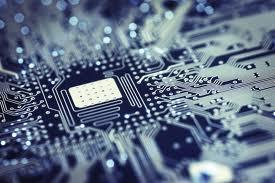Just as kids these days have no idea what a floppy disk is, kids in a few years may not understand the concept of a hard drive. And honestly, that’s probably not a bad thing. After all, computing these days is about faster responses, whether it’s completing tasks at the tap of a finger, switching between programs or apps seemingly instantly, or starting up without any lag time. These provide users the freedom to operate their devices in the ways that make the most sense, and that make the technology feel like an extension of the brain.

The problem with hard drives is that they have parts that physically move, which means they need a little bit of time to access information. We used to not mind a lag of even a few seconds, but these days people are turning up their noses if they have to wait for anything. Companies are increasingly turning away from traditional hard drives and toward the faster alternative: flash.
Apple Leads the Way (No Surprise Here)
As pretty much everyone expected, Apple is leading the way in making flash the standard, particularly in the company’s line of ultra-light laptops, the MacBook Air. The company has snubbed traditional hard drives since 2008, when it started substituting a solid state drive. In 2010, this switched to flash storage, and the company hasn’t gone back since then. Today’s line of MacBook Air computers boasts 512 GB of flash storage and buyers of the MacBook Pro can even choose between a traditional hard drive and a solid state drive with half the capacity. The fact that many buyers choose the solid state option is yet another indication that flash is king.
What is So Great About Flash Storage?
In addition to its name, which draws to mind superheroes with lightning bolts emblazoned across their chests, flash storage has tons of perks. It’s also known as solid state storage, and it allows nearly instant access to anything stored because there’s no mechanical rotational component. This means that regardless of the physical size of the storage, it doesn’t take any extra time to access information. Plus, flash is tiny, which makes it hugely advantageous for today’s mobile devices. Flash is a way to fit more storage into less space, making it ideal for ultra-thin laptops, tiny mp3 players, and super light smartphones.
How Well Does Flash Storage Perform?
If flash storage is so great, it makes you wonder why it wasn’t the standard before. One of the obvious answers is because flash storage has been more expensive at a price per gigabyte, to the point that it was prohibitively expensive in the past. Another problem that some types of solid state drives have data cells that decrease in performance over time. This one is being solved as well, though, as a test of the MacBook Air found that their performance remained stable, even after going through very rigorous use. This means that companies are figuring out how to use flash effectively as a storage medium.
Where is Flash Technology Headed?
According to Apple CEO Tim Cook, everybody is trying to copy Apple’s strategy of using only flash. Cook did also point out that not everybody is doing as well as Apple is at getting the technology to work at peak efficiency, but that doesn’t mean they’re going to stop trying. Chances are good there will be much more flash technology in the future, and not just for the small devices, but for bigger ones as well. It’s because people continually want more storage, and the speed of the traditional hard disk is not keeping up with the increases in need for capacity.
Flash storage is also advancing in not only the mobile device market, but in big servers and data centers. One of the major perks is that flash storage takes up less space, which also means that companies don’t face the dilemma of having to move just because they’ve run out of space for their servers. Plus, of course, the fast access to information doesn’t hurt. In the computing world, faster is always better.
People use computers in a much different way than they did when they were first introduced to the mass market, and flash is just the natural transition that stems from changes in use. Expectations are for instant information that can come from tiny, portable devices. Flash beats out traditional hard disks in both of these areas, and it’s becoming the standard. Why waste time and space with a bulky hard disk that has moving parts that could fail when you could get flash storage instead? Consumers vote with their pocketbooks, and votes are stacking up for flash.

